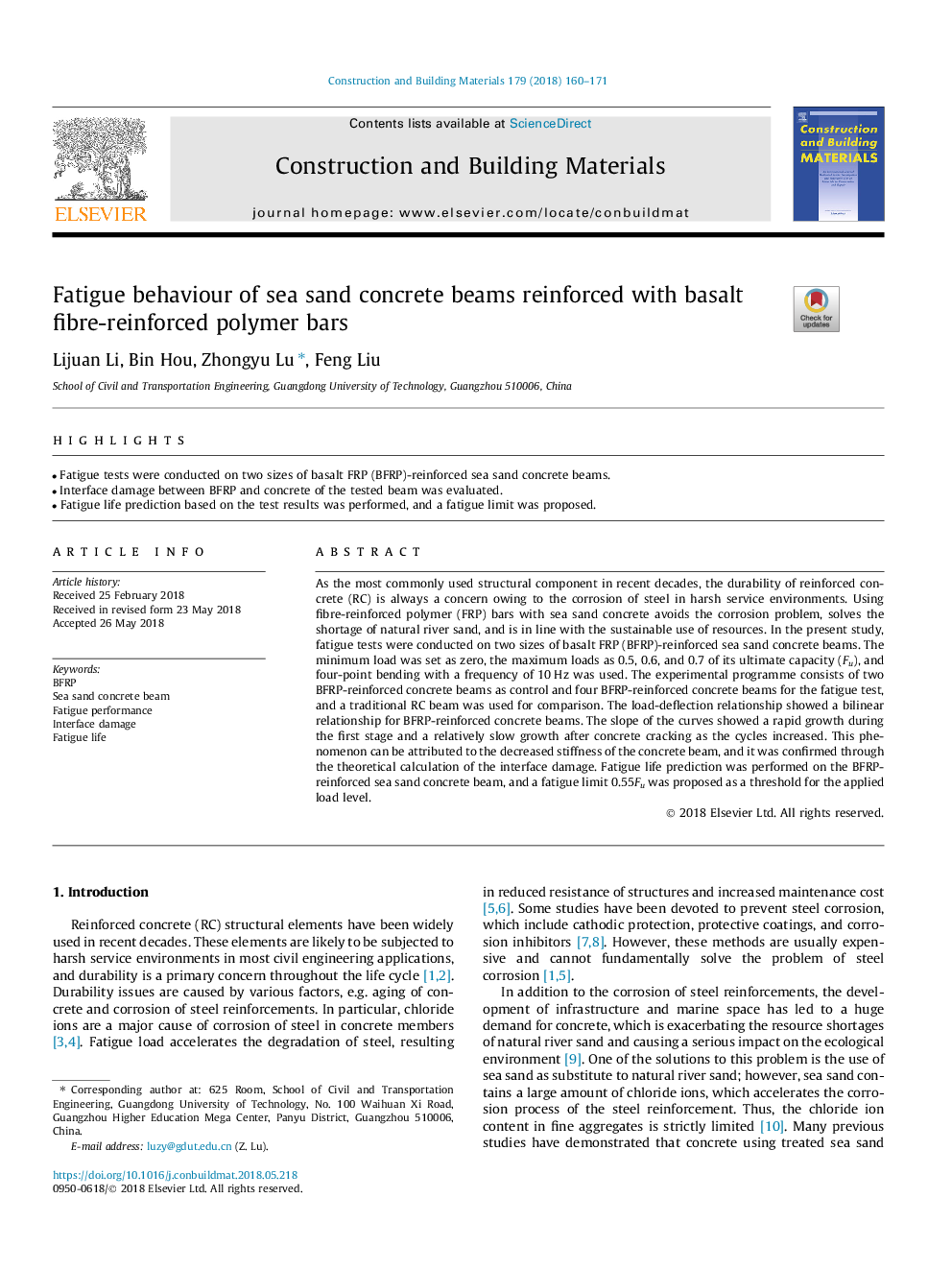| Article ID | Journal | Published Year | Pages | File Type |
|---|---|---|---|---|
| 6712615 | Construction and Building Materials | 2018 | 12 Pages |
Abstract
As the most commonly used structural component in recent decades, the durability of reinforced concrete (RC) is always a concern owing to the corrosion of steel in harsh service environments. Using fibre-reinforced polymer (FRP) bars with sea sand concrete avoids the corrosion problem, solves the shortage of natural river sand, and is in line with the sustainable use of resources. In the present study, fatigue tests were conducted on two sizes of basalt FRP (BFRP)-reinforced sea sand concrete beams. The minimum load was set as zero, the maximum loads as 0.5, 0.6, and 0.7 of its ultimate capacity (Fu), and four-point bending with a frequency of 10â¯Hz was used. The experimental programme consists of two BFRP-reinforced concrete beams as control and four BFRP-reinforced concrete beams for the fatigue test, and a traditional RC beam was used for comparison. The load-deflection relationship showed a bilinear relationship for BFRP-reinforced concrete beams. The slope of the curves showed a rapid growth during the first stage and a relatively slow growth after concrete cracking as the cycles increased. This phenomenon can be attributed to the decreased stiffness of the concrete beam, and it was confirmed through the theoretical calculation of the interface damage. Fatigue life prediction was performed on the BFRP-reinforced sea sand concrete beam, and a fatigue limit 0.55Fu was proposed as a threshold for the applied load level.
Related Topics
Physical Sciences and Engineering
Engineering
Civil and Structural Engineering
Authors
Lijuan Li, Bin Hou, Zhongyu Lu, Feng Liu,
